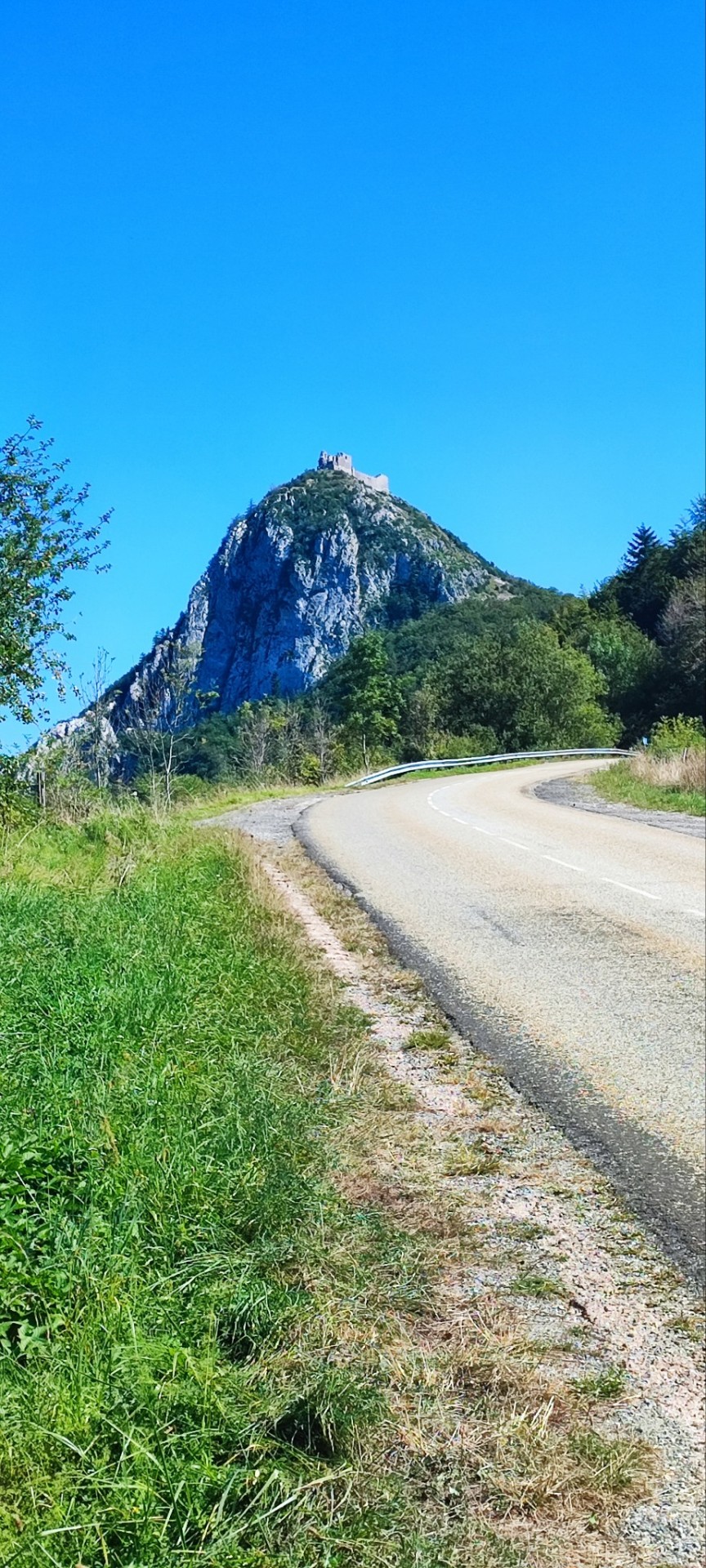#MONTSEGUR
Explore tagged Tumblr posts
Text

Reconstrucció ideal de Montsegur en temps de la croada albigesa.
#Montsegur#castell#Croada albigesa#Croada càtara#País d'Olmes#País d'Òlmes#fortalesa#castell grealenc#castell griàlic
3 notes
·
View notes
Video
youtube
The Otherworld (2013)
about the Zone, region of high weirdness in southern france
3 notes
·
View notes
Text
Twinkling Star of Montsegur (Choka Poem)
(Poem about the medieval siege of Château de Montségur, a religious battle aimed to destroy the Cathars)
Beneath stars twinkling
Sophia and Christ flew down
In the form of birds
In the form of large vultures
Vultures filled with grace
Vultures from the Great Mountains
The Mountains of Snow
They both perched on an ash tree
Whose roots go deep down
To Hades, the home of worms
Whose trunk goes high up
To the Kingdom of Heaven
They watched the white lambs
Twinkling with heavenly spears
Glittering with shields
Shining in holy armour
Gleaming with their swords
Ready to defend their home
Their faithful castle
Against the wolves of Saklas
However old fate
That serpent trapped in hunger
Wanted to slaughter
Every lamb looking upwards
Every faithful lamb
To snuff out their shining light
The light of the world
The two vultures from heaven
Knew this coming fate
And so, they sang in secret
“The home is the spear
The castle is the army
The home is the shield
The castle is the armour
The home is the sword
This small star of holy faith
Will soon disappear
When the red fire rises
From the dying earth
But after a day of toil
You will reunite
As a palace of starlight
And the lambs shall watch
As shining angels at peace
As twinkling stars of the night”
#poetry#poets on tumblr#poem#spiritual#original poem#christianity#christian#montsegur#medieval#medieval history#cathar#catharism#martyrs#french history#hope#in memoriam#memorial#war#medieval warfare#military#medieval war#tribute#history#religious#religious poetry#gnostic christianity#france#european history#persecution
1 note
·
View note
Video
OTTO RAHN-ENCUENTRO-GRIAL-MONTSEGUR-CUEVA-ARTE-PINTURA-MISTCISMO-AGUA-PIEDRAS-ARTISTA-PINTOR-ERNEST DESCALS por Ernest Descals Por Flickr: OTTO RAHN-ENCUENTRO-GRIAL-MONTSEGUR-CUEVA-ARTE-PINTURA-MISTCISMO-AGUA-PIEDRAS-ARTISTA-PINTOR-ERNEST DESCALS- En su larga búsqueda del GRIAL, por fin OTTO RAHN encuentra el mágico cáliz en las cuevas cercanas al castillo de Montsegur en la Occitania de Francia, entre piedras y un tranquilo estanque de agua, momentos especiales en la vida del investigador alemán, en un entorno de enorme misticismo el lugar se ilumina con gotas de agua que parecen llover con lentitud. Pintura del artista pintor Ernest Descals sobre papel de 50 x 70 centímetros.
#GRIAL#OTTO RAHN#ENCUENTRO#BUSQUEDA#CUEVA#CAVE#AGUA#WATER#PIEDRAS#STONES#ESTANQUE#INTERIOR#MONTSEGUR#OCCITANIA#FRANCIA#MEDIEVALISTA#ESCENA#MISTICISMO#MOMENTOS#MAGIA#INVESTIGACION#SANTO GRIAL#CALIZ#HOLY GRAIL#PLASTICA#ARTE#ART#ARTWORK#PINTURA#PINTAR
0 notes
Text

Montsegur 1244 goes to Japan! (my love for this game is boundless <3) https://thoughtfuldane.com/2023/07/29/montsegur-in-japan/
1 note
·
View note
Text
ARCHONS, OVERLORDS & MAGICK: 'In The Footsteps Of Otto Rahn', Nazi Holy Grail Hunter - By Jack Heart
Source – vtforeignpolicy.com “…By the time Rahn arrived in Montsegur sometime in 1930 the French secret society of Polaires, the Italian secret society of White Eagle, and the German secret society of Thule, were all scouring the Sabarthez under the auspices of their respective country’s intelligence agencies. Rahn had been sent by a faction of the Thule Society which would soon become the…
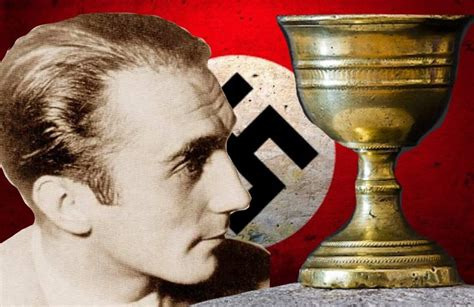
View On WordPress
3 notes
·
View notes
Text
Perhaps the most famous female Cathar was Esclarmonde de Foix. She was a member of one of the most important families in the Languedoc, and ruled Foix as regent when her husband died in 1204. Esclarmonde wielded great power during her lifetime. She witnessed documents alongside her brother, like the settlement in 1198 between the Cistercians of Boulbonne and the Count of Foix, so we know she had enough secular influence to sign charters. She was also responsible, along with Raymond de Pereille, for rebuilding the fortress at Montsegur to protect the remaining Cathars from the Albigensian Crusade. While she may not have lived long enough to see its fall during the siege, her actions offered shelter to families that had been driven many hundreds of miles into exile by decades of persecution. But it is her role in Cathar preaching that is most often cited.
She was made a perfect and ran a house for Cathars in Pamiers. In the same city, two years after the death of her husband, Esclarmonde attended a council where representatives of Catholics, Cathars and Waldensians presented their beliefs. It ran for a month and each spokesperson was given a full day to argue their position. To the disdain of the predominantly male council, Esclarmonde was invited to present on Cathar beliefs. She took the stage but was heckled by the Catholic representative, Brother Etienne de Miserichorde: 'Go, Madam, to spin your distaff. It is not appropriate for you to speak in a debate of this kind.' The misogynistic response has enflamed centuries of commentators who see in Esclarmonde a proto-feminist. Indeed, she has developed legendary status in the Pays Cathare, even though it is difficult to gather facts such as where and when she died. Her involvement in a council and her derogatory treatment by a member of the clergy highlights both the positions to which Cathar women could rise, and the destruction their reputations could suffer at the hands of the orthodox church.
1 note
·
View note
Text
The last Catharism fortress

The castle of Montsegur, located on the Occitan side of the Pyrenees, is an emblematic fortress linked to the history of the Cathars and the papal crusade against the Albigensians. Its origins date back to well before the 12th century, due to its strategic position on a rocky hilltop.
This castle, probably rebuilt from 1204 onwards by Raimon de Perelha, of the lineage of the lords of Mirapeis, became a refuge and spiritual centre for the Cathars, a religious community declared heretical by the Catholic Church for its dualist beliefs and its opposition to papal authority.
Montsegur's most significant moment came during the Crusade against the Albigensians (1209-1229), a military campaign led by the French monarchy and the Inquisition to eradicate the Cathar heresy in Languedoc. After the Cathar defeat in several Occitan regions, Montsegur was consolidated as the last Cathar stronghold.
Between 1243 and 1244, the castle was besieged by French royal troops in a long siege that ended with the surrender of the defenders in March 1244. Some 200 Cathars who refused to abjure their faith were burnt at the stake in a meadow at the foot of the mountain, a tragic episode that gave its name to what is known as the Camp dels cremats (field of the burnt).
After the fall of the Cathars, the castle was rebuilt and adapted to the military needs of the time, serving as a border fortress between France and the Catalan territories of the Crown of Aragon. During the 13th and 14th centuries, the fortification played an important role in the border tensions between the two kingdoms, especially before the Treaty of Corbeil (1258), which established the border lines between the two crowns.
Subsequently, Montsegur lost its military importance as the frontier was consolidated and warfare technology evolved. Over the following centuries, the castle fell into disuse and decay, becoming a ruin.
In modern times, Montsegur has become a symbol of the spiritual and cultural resistance of the Cathars and a tourist and historical destination. Today, the castle is a protected site, listed as a historical monument in France since 1862, and continues to fascinate for its role in one of the most dramatic periods of medieval European history.
1 note
·
View note
Text
Castèl de Montsegur

El castèl de Montsegur, situat a la vessant occitana dels Pirineus, és una fortalesa emblemàtica vinculada a la història dels càtars i a la croada papal contra els albigesos. Els seus orígens es remunten a abans del segle XII, donada la seva posició estratègica a sobre un cim rocós.
Aquest castell, probablement reconstruït a partir del 1204 per Raimon de Perelha, de la nissaga dels senyors de Mirapeis, es va convertir en un refugi i centre espiritual dels càtars, una comunitat religiosa declarada herètica per l’Església Catòlica per les seves creences dualistes i la seva oposició a l’autoritat papal.
El moment més significatiu de Montsegur es va produir durant la croada contra els albigesos (1209-1229), una campanya militar liderada per la monarquia francesa i la Inquisició per eradicar l’heretgia càtara al Llenguadoc. Després de la derrota càtara a diverses regions occitanes, Montsegur es va consolidar com l’últim bastió càtar.
Entre 1243 i 1244, el castell va ser assetjat per les tropes reials franceses en un setge prolongat que va acabar amb la rendició dels defensors el març de 1244. Uns 200 càtars que es van negar a abjurar de la seva fe van ser cremats a la foguera en un prat als peus de la muntanya, un episodi tràgic que va donar nom al que és conegut com el Camp dels cremats.
Després de la caiguda càtara, el castell va ser reconstruït i adaptat a les necessitats militars del moment, servint com a fortalesa de frontera entre França i els territoris catalans de la Corona d’Aragó. Durant els segles XIII i XIV, la fortificació va tenir un paper important en les tensions frontereres entre els dos regnes, especialment abans del Tractat de Corbeil (1258), que va establir les línies frontereres entre totes dues corones.
Posteriorment, Montsegur va perdre importància militar a mesura que la frontera es consolidava i la tecnologia bèl·lica evolucionava. Durant els segles següents, el castell va caure en desús i es va deteriorar, convertint-se en una ruïna.
En èpoques modernes, Montsegur ha esdevingut un símbol de la resistència espiritual i cultural dels càtars i una destinació turística i històrica. Avui, el castell és un lloc protegit, declarat monument històric a França des del 1862, i segueix fascinant pel seu paper en una de les èpoques més dramàtiques de la història medieval europea.
1 note
·
View note
Text

Route: Andorra La Vella - Castle of Montsegur - Toulouse - Andorra La Vella Duration: 12 h The first stop of our tour will be at Montségur castle, which is the symbol of Cathar resistance rebuilt at the start of the 13th century, was once a refuge for Cathars hunted down by the Inquisition.
#european guided tours#affordable european tours#european travel agency#european tours#european bus tours#travel agency
0 notes
Text
This is Opera - Parsifal - Wagner (2015)
Temporada 1, Episódio 5 legendado em português: link.
Acha que não gosta de ópera? Então venha conosco porque a ópera não se aprende a escutar, aprende-se a sentir.
Com apresentação do barítono e pianista Ramon Gener, “Isto é Ópera” é uma série imaginativa, inovadora, de puro entretenimento que nos conduz através da história da ópera, a partir do nascimento do género até aos nossos dias. Uma série que fornece as chaves para entender e apreciar as óperas mais importantes da história, de uma forma simples e acessível a todos os públicos.
Nesta série vamos descobrir o enredo de cada história de uma forma original e envolvente que não nos deixará indiferentes, captando a nossa atenção desde o primeiro minuto.
A genialidade de cada compositor, a paixão dos personagens e a universalidade de cada história gera um ambiente de cumplicidade com o espectador. As melhores histórias, os melhores compositores, os melhores personagens, as melhores árias. Visitaremos as cidades onde óperas ganharam vida, serviram de inspiração para compositores ou onde os personagens se apaixonaram: Paris, Veneza, Roma, Londres, Barcelona, Viena, Madrid, Cairo, Florença, Milão, Sevilha, Salzburgo, Bayreuth, Munique.
RTVE
Wikipedia
Episódio 05: Parsifal - Wagner Parsifal foi a última ópera de Richard Wagner. A sua história centra-se na busca do Santo Graal, mas na verdade é uma jornada espiritual para o protagonista. Afinal… o que é o Santo Graal? Uma taça? Um objeto? Algo mais? Para responder a isto "Isto é Opera" vai viajar por três locais diferentes: Montsegur, no sul da França, para lembrar os cátaros; Valencia, para ver o famoso cálice que dorme na catedral e que alguns dizem ser o verdadeiro Graal; e, finalmente, o Mosteiro de Montserrat, perto de Barcelona, onde o padre Bernat Juliol irá falar sobre a visita que Heinrich Himmler, chefe da SS, fez ao mosteiro convicto de que era naquela basílica que se guardava o Santo Graal. Foi inspirado na abadia que Wagner criou o principal cenário da sua ópera. Além disso, sendo um dos fatores decisivos no enredo, o programa vai descobrir o quão poderoso pode ser um beijo e como ele pode mudar uma vida inteira. Finalmente, e como curiosidade, vamos descobrir porque o 13 era o número da sorte de Richard Wagner.
0 notes
Text

Montsegur, where around 325 Cathars were burned alive in 1244 for disagreeing with Catholic theology.
Eerste jaarlijkse brandstapelherdenking in Nederland voor ‘ketters’ - Boeddhistisch Dagblad
Opnieuw vercheen er een boek over de Katharen. Het heet De laatste Kathaar. Een interessante titel. Wat zouden nog levende Katharen ervan vinden?
Katharen werden in Zuid-Frankrijk als ketters vervolgd en gedood door de katholieke kerk, omdat ze gnostici waren. Ze geloofden vanuit hun hart, waren welvarend en genoten steun van de plaatselijke adel.
De roomse inquisitie zal een heel eind gekomen zijn om vanuit haat en afgunst deze mensen uit te roeien, maar dat is allicht niet gelukt. Katharen leven, ze zijn onder ons. Hoe ze zichzelf noemen?
1 note
·
View note
Text
The sorrowful kingdom is breathing with woe,
(Under feet of the Pure ones)
Where sky is inhaling the rigorous thunders,
Vermillion morning, begotten by dawn
(Tears of bloody Pyrenees)
With frosty swordcut in hands of the sunrise.
And fathomless roaring is shaking the rocks,
(Voice in blood from the ages)
Illusion of matter will burn in the fire,
And Montsegur is insanely bloody…
(Essence metamorphoses)
Flash… The visions of past…
Emerald ray leads to forbears’ land,
Pillar of Temple that keeps solar essence,
First principles, lives come to end…
Wandering to comprehend.
Heart of the cave – way to center of world,
Solar God’s stone holds our hope in ascension,
Meanings that common men never behold,
You must forget what you’ve learnt.
In secret deeps of sacred caves,
In grimness of the odd dead dreams,
The lord of mists with Grail and Spear
Is coming from the darkest spheres.
Two lightnings penetrate the maille
At inexistent sleepless night,
And frosty blizzard takes my corpse,
Rays of my soul will never shine.
I swear, I see the light of stones,
And trace of Lancers burns on them.
Endura of sharp-stinged snakes
Is piercing frost of forest trails.
My anger shakes the walls of church,
And revelation comes to me:
I am a scream in your dead souls,
I breath with wind of empty words.
I am a sign in ancient cave,
I am a raven’s scream at dawn,
And when my spirit has been drained,
I found treasure in the tomb.
I pass penumbra from the dark,
The mountain fog has filled my soul,
The sacred spirits sing with me,
I am the enemy of world.
Two lightnings penetrate the maille,
I swear, I see the light of stones,
I am a sign in ancient cave,
Endura of sharp-stinged snakes.
I’ve found treasure in the tomb
And turned to Titan in the rocks.
The revelation came from dreams,
I am the scream in your dead souls.
The soul crystal is in me:
The pagan, seeker, heretic.
0 notes
Text
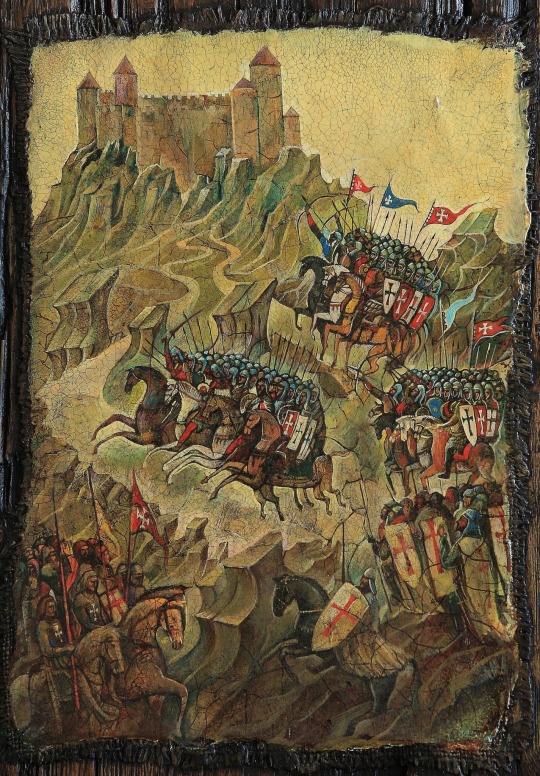
The Siege of Montségur Fortress, 1244 by Sergey Lesnikov
#siege of montségur#montsegur#montségur#castle#fortress#art#sergey lesnikov#cathars#crusaders#albigensian crusade#crusades#history#france#languedoc#occitania#château de montségur#europe#european#medieval#middle ages#crusade#knights#christianity#christian#mountain#kingdom of france#cathar#catharism#crusader
184 notes
·
View notes
Text
País Cátaro Foix y Montségur
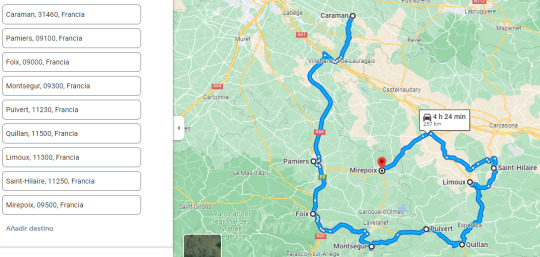
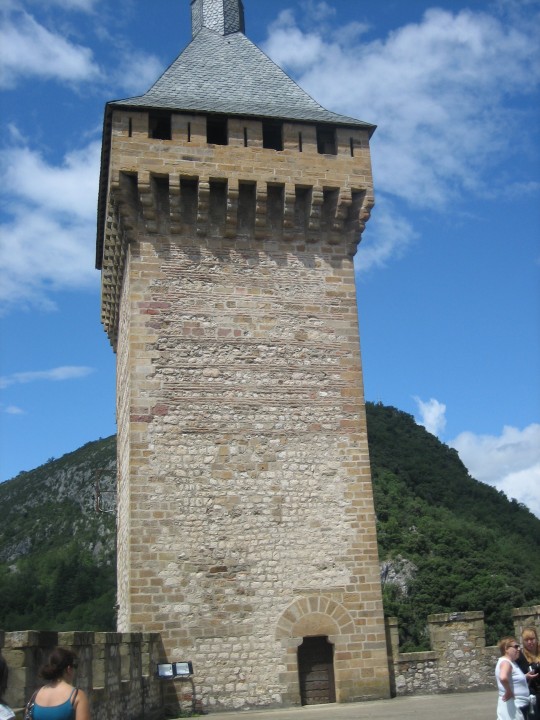
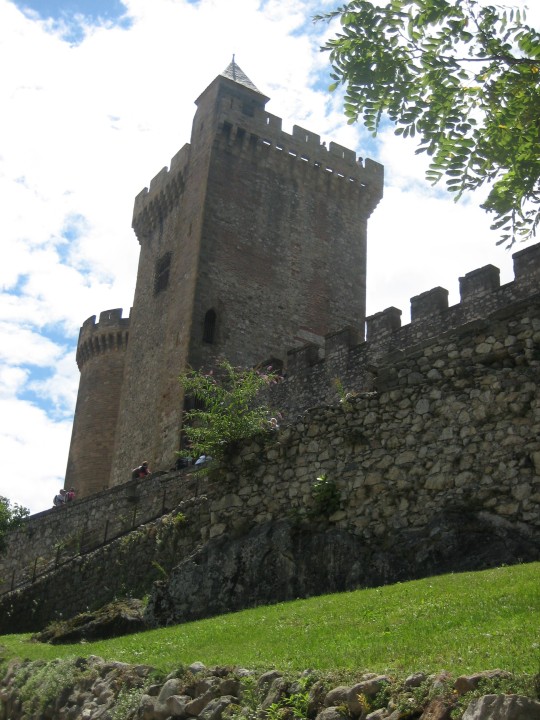


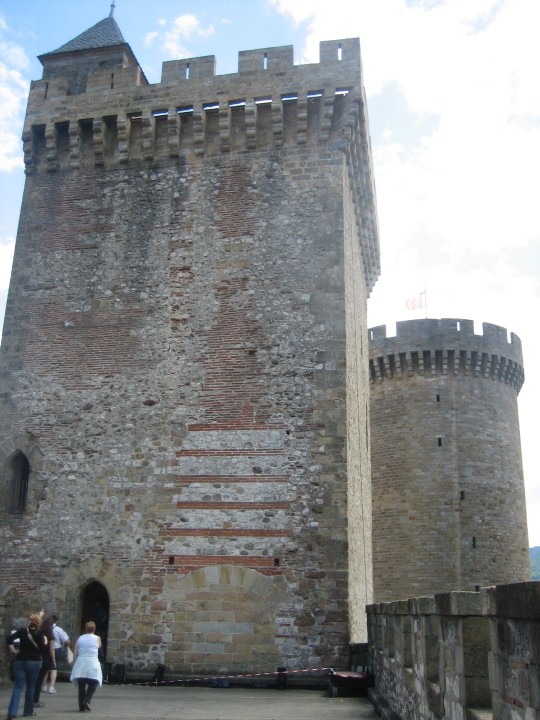

El Castillo de Foix

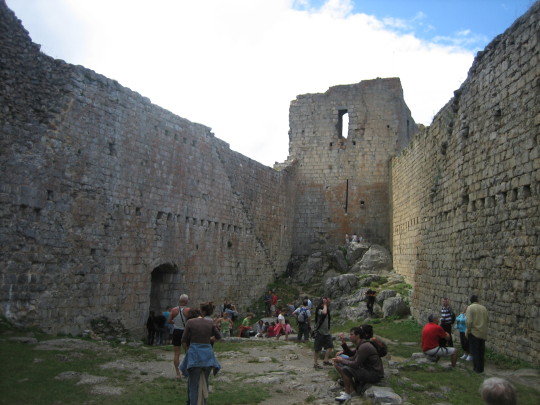

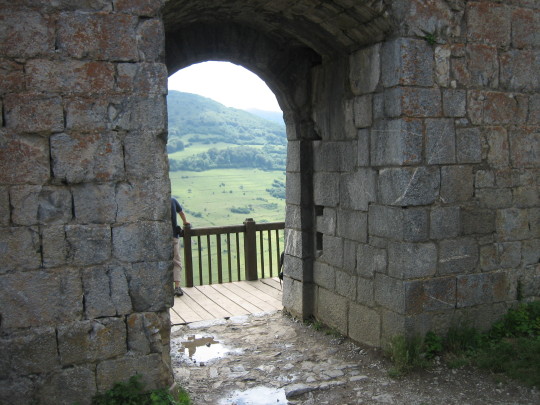
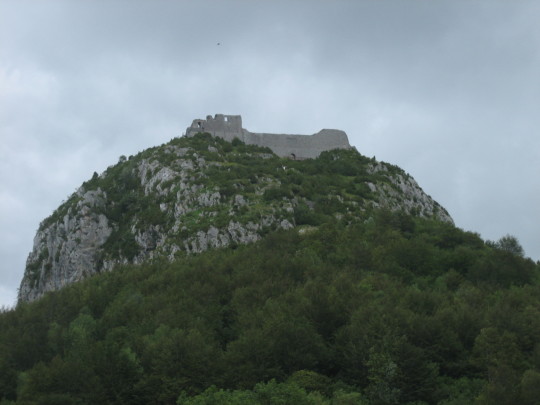
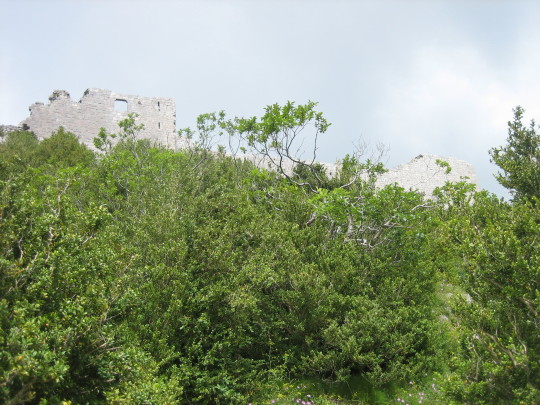
Castillo de Montsegur
2 notes
·
View notes
